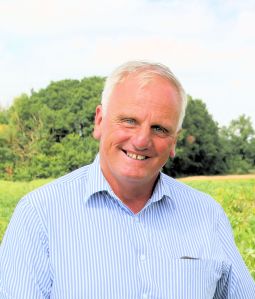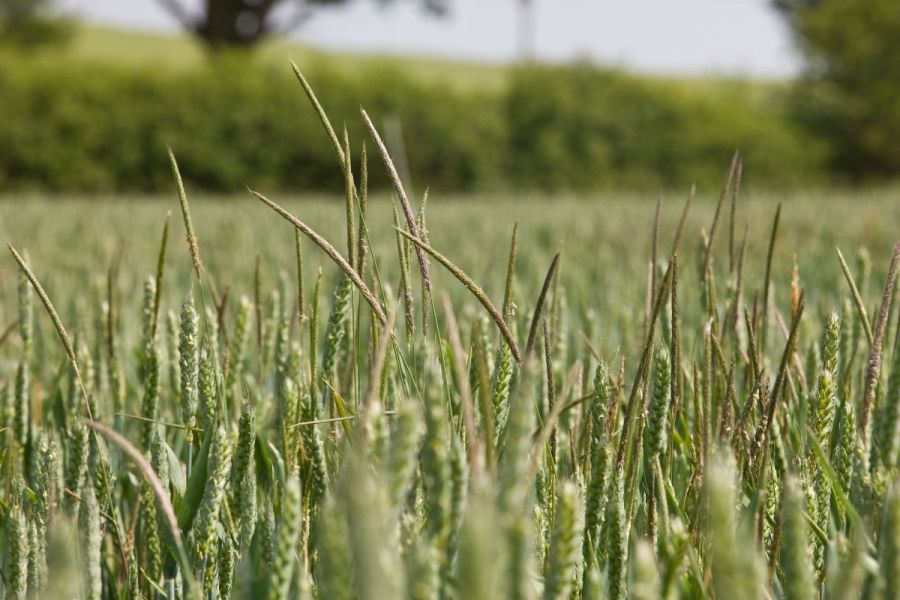Complacency is not an option when it comes to grassweed management and in years where forces favour them, it’s more important than ever to prioritise cultural control methods. CPM explores sustainable approaches to help manage the pressure.
“We’ve seen losses of 3t/ha – something I’ve never seen in my 20 years of work at Stow Longa.”
By Melanie Jenkins
If there’s one take home lesson from this season, it could be argued that it’s how grassweeds shouldn’t be underestimated. Given an inch, they’ll take more than a mile.
As a result, this coming autumn will be key to hitting the reset button and getting on top of blackgrass, ryegrass and brome, highlights Agrii’s Colin Lloyd. “Last autumn saw the highest and worst case of late blackgrass germination I’ve seen in my career and it later went on to influence things in the spring. Now growers feel as though they’ve gone back years in their grassweed control.”
So how have things ended up where they are? “Last autumn there was a lack of grassweed germination in the dry, stale seedbeds,” explains Colin. “At our Stow Longa site we had our first meaningful blackgrass chit on 4 October, but the real flush happened on 14 October. For anyone drilling in September, this was a real problem.”

Blackgrass has been so rampant this year that even hybrid barley has struggled to outcompete it, says Colin Lloyd.
Delaying drilling has been used to control blackgrass for years, and although this isn’t a great option on heavier land, Colin says what this actually means is to not drill the worst fields early. “Use a red, amber and green system to prioritise. We know the most troublesome blackgrass fields tend to be the heaviest and wettest going into winter.
“Last autumn, we had good weather at the end of September and growers worried they wouldn’t be able to drill later so decided to plant wheat early, resulting in blackgrass issues.”
At Agrii’s Stow Longa site in Cambridgeshire, wheat was drilled on 26 October. Where soils were min-tilled or direct drilled, crops had 280 ears/m² of blackgrass, but where the plough was used as a reset tool there were only 4 -10 ears/m².
“As we know, 100 ears/m² of blackgrass causes 1.0t/ha loss in crop yield, so that’s a 3.0t/ha loss in the min-tilled and direct drilled areas,” says Colin. “On farm, this can be the difference between profit and loss. Also, if you can’t get onto a field to drill in the autumn, there’s the option of spring cropping meaning you can cultivate and spray glyphosate beforehand to break the blackgrass cycle.”
For growers who don’t want to revert to the plough, Colin clarifies that this is fine, but by continuing to min-till or direct drill, there’ll be higher levels of grassweeds to contend with.
Colin flags that optimising cultural methods goes a long way. “In the ploughed plot at Stow Longa where the herbicides were applied, there were 4 ears/m² of blackgrass, demonstrating over 80% control from the herbicides. But in the min-tilled and direct drilled plots, there was still 80% control – but of a lot more blackgrass. Colin stresses that this is why cultural control is important, with one option being to plant hybrid barley. “The competitive element of hybrid barleys means it’s more robust in a grassweed situation, something our trials have shown repeatedly.
“But this year, where we’d expect robustness from hybrid barley and little difference in yield, we’ve seen losses of 3t/ha – something I’ve never seen in my 20 years of work at Stow Longa. If we’ve experienced this in barley yields, what could happen with wheat?” he questions. Colin believes this could be due to slow establishment in the cool spring conditions.

Steve Corbett advises going back to the fundamentals to tackle ryegrass by digging a hole to inspect soil structure and plant roots.
But blackgrass isn’t the only weed running riot. “Brome is mostly only present in the min-tilled and direct drilled blocks at Stow Longa, and had built up over the past few years in those situations.”
To tackle soft brome, the weed seed was left undisturbed on the surface to allow the minimum of a month required to germinate ahead of a herbicide application. “This partially worked and subsequently the winter barley had little soft and meadow brome present, but instead we ended up with sterile brome throughout.
“Conditions which were wrong for one weed were right for the other. It’s worth bearing in mind that transitioning from ploughing to min-till will likely change your grassweed species.”
On a positive note, Colin believes brome is easier to beat than blackgrass. “You can either go back to ploughing or bring in spring cropping. Where we’ve done this at Stow Longa it’s broken the brome cycle very quickly.”
Ryegrass has also presented growers and agronomists with difficulties this season, according to Agrii’s Steve Corbett. “This year, even the tried and tested methods to deal with the weed have been challenged.”
Since 2019, work on blackgrass at Stow Longa has been copied and used at Agrii’s ryegrass trial site at Olde Appleton in the Vale of York. “We quickly learnt that if blackgrass at 100 ears/m² takes out 1t/ha of wheat, 500-600 ryegrass ears/m² will flatten the entire crop.”
However, Steve says the positive results of a plough reset were clear. “Before we started the trial work, the site was under a min-tillage regime for quite some time, and so perennial ryegrass was winning.”

Rob Daniel is exploring the use of cover and companion crops to provide ground cover and help tackle ryegrass.
What also became obvious was that soil structure had to be addressed, says site agronomist, Rob Daniel. “The site has high silt content which over winter would run into the clay where we’d ploughed causing blocks and constrictions, meaning plant roots weren’t penetrating further than 5-8cm. Water had nowhere to go so we had waterlogging and the ryegrass was having a field day.”
But by improving the soil structure, the cash crop can compete, says Steve. “This might seem obvious, but it can be missed. Go back to the fundamentals – dig a hole to inspect structure and plant roots and find out why water isn’t moving.”
At Olde Appleton, a low disturbance subsoiler was used after the plough to break through the silt and move water. Since then, the land has yielded a spring barley crop just shy of 10t/ha – something it’s never done before, says Steve.
“Step one of tackling ryegrass should involve looking at soil structure. Step two is moving water, step three is encouraging rooting depth, and step four is resetting with the plough,” he adds. “But don’t plough and then plough again, because as with blackgrass, this brings the seed back up.”
Rob is now exploring the use of cover and companion crops to provide ground cover and help tackle ryegrass with one notable example. “We decided to plant Westerwolds ryegrass which is outcompeting perennial ryegrass, it’s been staggering how quickly the organic matter built up in that area, transforming the soil structure and then cutting it before it seeds in the spring.”
This article was taken from the latest issue of CPM. Read the article in full here.
For more articles like this, subscribe here.
Sign up for Crop Production Magazine’s FREE e-newsletter here.




